Nijo Castle is one of the must-see spots on our Kyoto list. We were really surprised to hear several visitors to the city say they weren’t going because there’s ‘no point when there is no castle. It is true that the main tower of Nijo castle burned down centuries ago but there are still plenty of other reasons to visit.
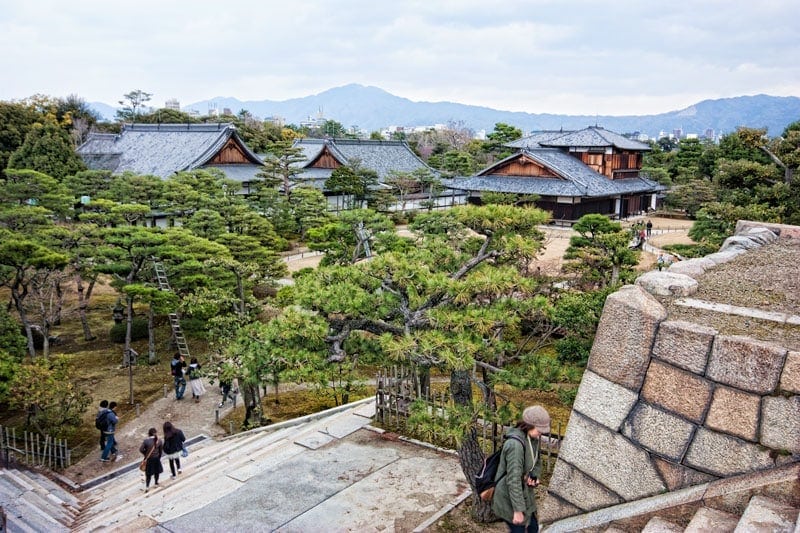
Nijo is one of the more complete examples of a castle complex in Japan. It earns its place as a world heritage property for these many cultural assets. While several castles in Japan have retained the main castle tower often other aspects of what it once was are lost in time.
Castles such as Himeji and Hikone do have original towers but the full site has not been retained as completely as Nijo when those towns were built up around it. In many instances, the gardens, outer moats, other buildings and layers of fortification have been lost in time.
Table of Contents
A brief history of Nijo Castle
The castle was established in 1601 when Tokugawa Ieyasu decreed that the feudal lords of western Japan must contribute to its construction. Ieyasu was an important figure in Japanese history as the first Shogun and founder of the Tokugawa shogunate that fundamentally ruled the country from 1600 – 1868. The Ninomaru Palace in the outer circle of defence was built first as the residence and office of the shogunate.
The 5 story castle tower and Honmaru palace in the interior circle of defence were completed in 1626 during the time of his grandson Tokugawa Iemitsu. While the Tokugawa shoguns continued to treat Edo (Tokyo) as the capital, the Imperial Palace at the time was in Kyoto so the shogunate kept this impressive residence nearby.
In August 1750 a lightning strike hit the castle tower, and the resulting fire burned it to the stone foundations. Disaster struck again in 1788 when a great fire swept Kyoto, it claimed the Honmaru Palace. Neither the castle nor the palace was ever rebuilt.
In 1893 the palace of the Katsura Imperial family was relocated to the site from the Kyoto Gosho Palace to become the new Honmaru Palace. The beautiful Honmaru gardens were also created at this time. The precursor of this change from a shogunate palace to an imperial one was the return to imperial rule in 1868.
Known as the Meiji restoration the leaders of 40 feudal clans ended the Edo Bakufu government and returned power to the Imperial throne. In 1939 the Imperial household donated Nijo Castle to the city of Kyoto and in 1994 it was inscribed on the World Heritage list.
The design and layout of Nijo Castle
The grounds today are still complete and feature two concentric rings of fortification walls and wide moats. In many other castles, the outer moats were filled in and land cribbed from the castle ground to make way for growing town. Despite the immense value of the land that Nijo stands on it’s remained intact in central Kyoto city.
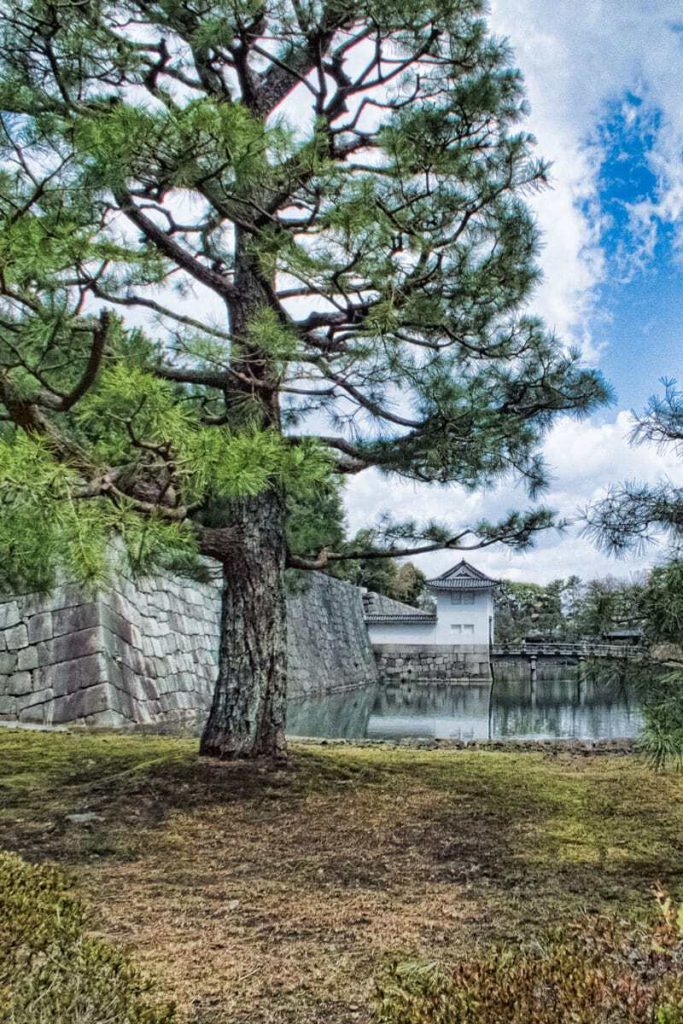
Eastern gate and guardhouse
We arrived from Nijo-jo Mae station so the great eastern gate shown below was the nearest entry point. On the left is a guard office called a ‘Bansho’, there are few of these surviving from Japan’s extensive feudal castles making this one which was built in 1663 particularly important for historians.
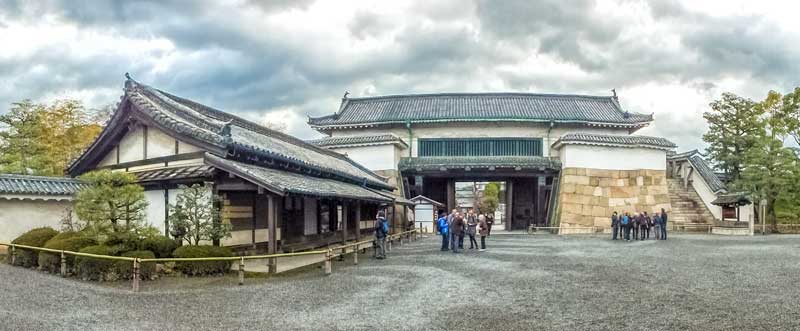
When the Tokugawa Shogun was away from the castle a group of samurai known as ‘Nijo Zaiban’ were responsible for guarding it. They were divided into groups of 50 men and two of these groups would be permanently stationed at the castle and be rotated once a year.
The Ninomaru Palace
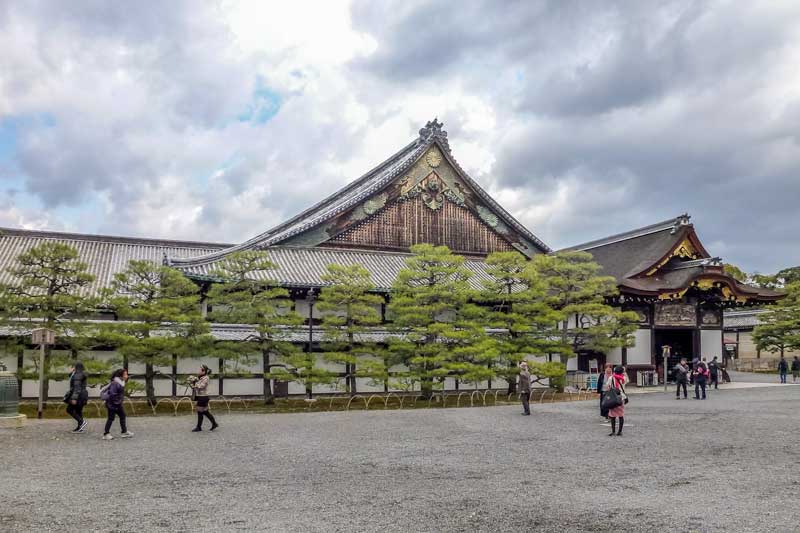
The Ninomaru Palace complex is a series of five buildings that connect on a diagonal, a shape compared to a flock of flying geese. As the palaces of Edo Castle (Tokyo) and Osaka Castle have been lost Nimomaru has provided a lot of information about the design and structure of the period.
The palace is just inside the eastern gate and is listed as a National Treasure. Its five buildings in total cover 3,300 square metres.
1. The Tozamurai
This is the Guard House and the largest building in the complex. Rooms here were used by the shogun’s retainers, others were lounges where the feudal lords and Imperial messenger waited for an audience with the shogun.
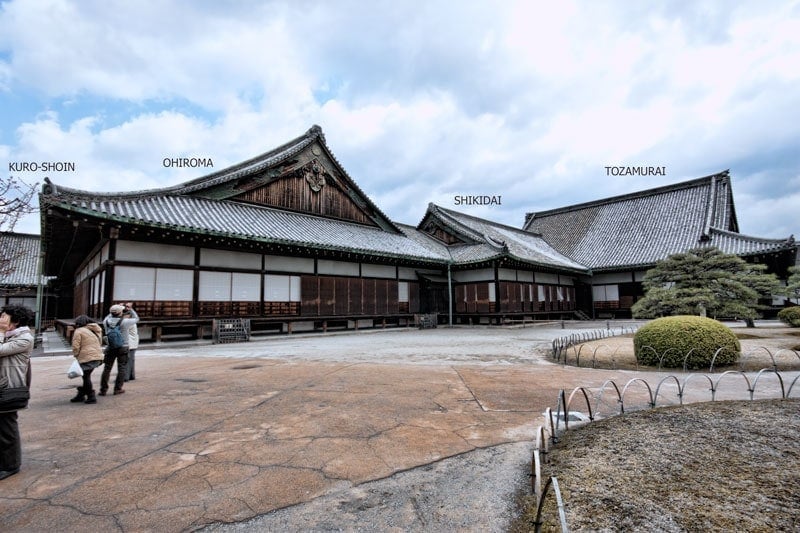
2. The Shikidai
The Shikidai is the reception room and the smallest building made up of only two rooms. The highest-ranking councillors of the military government would be based in here when the shogun was in residence and convey greetings and gifts from visitors to the shogun.
3. The Ohiroma
The Ohiroma is the grand chamber that was used for meetings with feudal lords. At 92 tatami mats in size it was great in both size and opulence with its tiled ceiling and heavily decorated wall panels. The shogun would sit on the raised floor of the Ichinoma chamber while the feudal lords would sit below in obeisance in the Ninoma. The white paper screens shown on the outside corner below could be opened to provide an impressive sweeping view of the garden.

4. The Kuro-shoin
The fourth section was the shogun’s personal inner audience chamber. The tiled roof styling of the Ohiroma continues on through here. The area is also styled with an Ichinoma and Ninoma used in the same way as the grand chamber to ensure the shogun retained a higher physical position and others looked up to him.
5. Shiro-shoin
Finally, the Shiro-Shoin was the Shogun’s personal residence comprising his sitting room and bedchamber. While beautifully decorated with ink sketches this private area was less lavish in its opulence and decoration than some of the other rooms.
The Nightingale Floors
If you’ve heard or read much about the time of the samurai and ninjas you will probably be familiar with the concept of the nightingale floors. If you’ve not heard of them then me telling you that you have to visit a place because the floors squeak is going to sound a little crazy but the tone and ‘song’ of these floors, plus the imagery of all those stories of intrigue and espionage, made it a must-do for me.
Between the entrance to the Ninomaru Palace and the Ohiroma (the most important reception hall where the shogun would receive his visitors), you may be able to hear the singing floorboards announcing the arrival of a visitor.
The chirping is created by wedges pushed up into the floorboards on the underside of the floor, the weight of someone walking over it causes the floor to move on the wedge rubbing it against nails near the beams and creating the noise. In Japan, these floors are referred to as uguisubari or bush warbler floors. A bush warbler is a bird common around Kyoto with a beautiful song that led to it being known in English as the Japanese nightingale, hence the English name for the technique.
The floors were designed as a countermeasure against thieves or spies and assassins, the ninjas of feudal Japan. They were complex and expensive, not something that was common but the homes of the top shogun and some other buildings did employ the technique. The photo below shows how the floor is created but this was taken at Chion-in temple in Kyoto on the overpass walkway which is much easier to access and observe the technique in use.
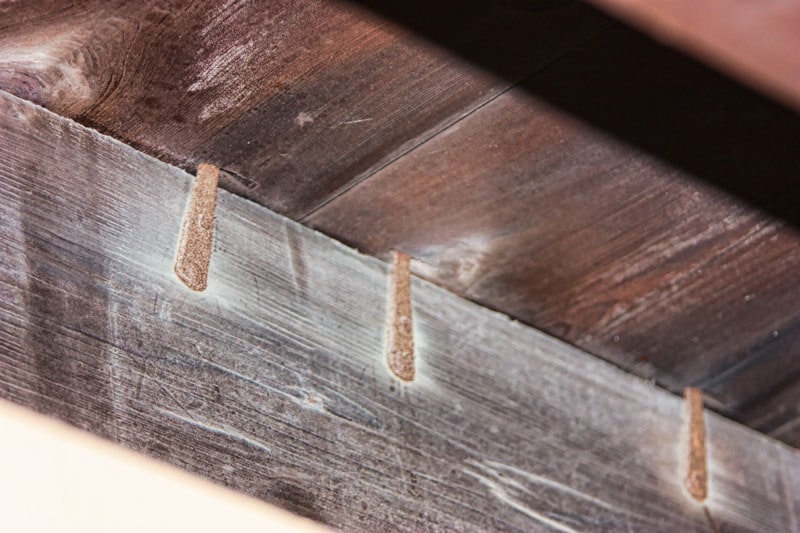
Seasonal highlights
There is no one right season to visit Nijo Castle, the famed gardens are worth a visit in any season but as with much of Japan, the spring blooms and autumn colours are perhaps the most popular.
If you time it right you may also visit an evening light-up event. We were a little early for peak blooms on this visit and when we returned to Kyoto a week or so later to a full flush of cherry blossom we had such a list of locations to visit we didn’t make it back here at night.
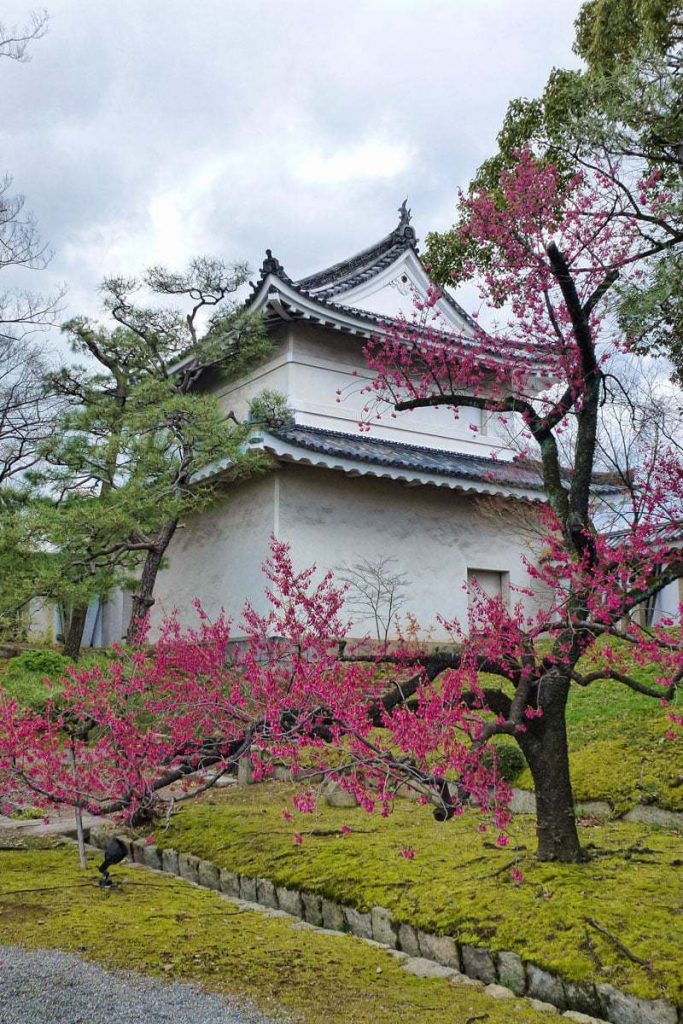
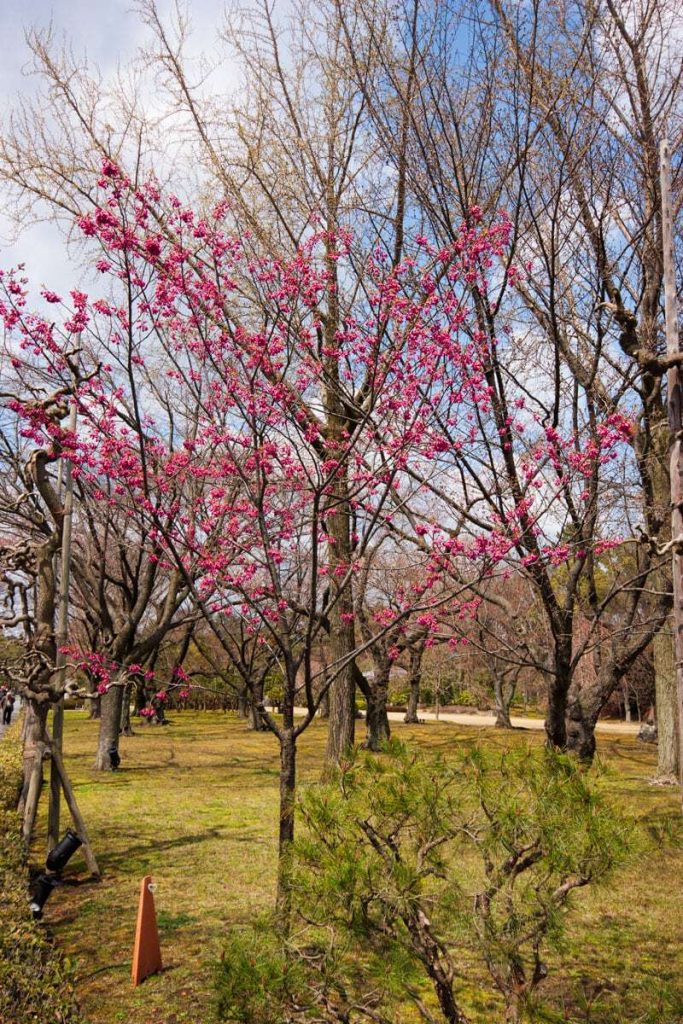
Getting to Nijo Castle
There are several ways to get to Nijo Castle in central Kyoto depending on your starting point, personal preferences and available time.
The first option is on foot. Kyoto is a great city for walking, it’s flat and much of it is compact for grouping highlights together. You might have read of our love for wandering around this beautiful city in our series on walking Higashiyama (the eastern hills area). We plan a central Kyoto version soon which will include Nijo Castle. From Kyoto station, it is 4km by direct route, and from a more central location such as Nishiki Market or the nearby Daimaru its 2km.
The second option is to use the bus system which is the cheapest option for getting around Kyoto. A day pass will cost you Y500 and you can jump on and off as you want but it can be crowded and the bus routes are convoluted making it a slow way to get around for shorter distances.
If you are using the bus to get to Nijo Castle the Raku 101 bus is a good option, it’s a tourist bus so announcements are made in English and the route is less convenient for locals so it often seems to be less crowded. This one covers the central west area so works for not only Nijo Castle but the Golden Pavilion, Ryoanji, Kitano Tenmangu shrine and the Nishjin textile centre if you’re interested in a free kimono fashion parade.
The subway is the third option and the one we ended up using because of the combination of activities we had planned for the day. You want the Nijojo-mae stop and from Kyoto station will cost you Y600 each way, the subway comes out at the convenient southeast corner of the castle grounds. There is a day pass for the bus and subway available for Y1200 if you have a few stops planned.
If you have a JR pass or prefer the train it’s only Y190 from Kyoto station on the Sagano line but it’s southwest of the castle and is about a 1.5 km walk to the entrance. This option is really for anyone arriving at or staying near Kyoto station as unlike the bus and subway it doesn’t pass through the main city areas.
Nijo Castle Visitor information
Opening Hours
Nijo Castle is open from 8.45 am until 5 pm. Admission closes 1 hour prior to closing time. The Ninomaru Palace opens from 9 am until 4 pm.
It is closed from 26 December until January 4 for the new year celebrations. We were also told it closes on Tuesdays during some months of the year (January, July, August, and December).
Special Openings
There are extensive cherry blossoms and trees providing autumn colour throughout the grounds around the Ninomaru and Honmaru Palace. There are spring and autumn special openings where the grounds are lit and open into the evening.
During this spring opening, there are many young women walking around in kimonos and yukata and we were told by one group that they received free entry to many of the temples and historic spots in Kyoto when in traditional dress which is a great incentive for them to get dressed up.
From late March to the middle of April, the exact dates vary a little each year, there is a nighttime illumination at Nijo Castle. Parts of the castle itself and many of the cherry blossom trees throughout the garden are lit up. There are also musical performances, ikebana displays, a tea ceremony and stalls with local Kyoto cuisine for sale. Entry to the special event is Y600.
Entry Fee
Entry is Y600 for adults. Reduced rates for children, students and seniors are available.
Facilities
There are public restroom facilities, a tea room and a souvenir shop on site.
There are also English audio guides available for hire for Y500. Some people seem to like these but after trying them once on our first trip at the silver pavilion we found it frustrating so worked it out the best we could ourselves as we went around.
If you found this article useful please consider saving it to Pinterest. It makes it easy for you to find it again, it helps us, and it helps other travellers to find the information they are looking for.
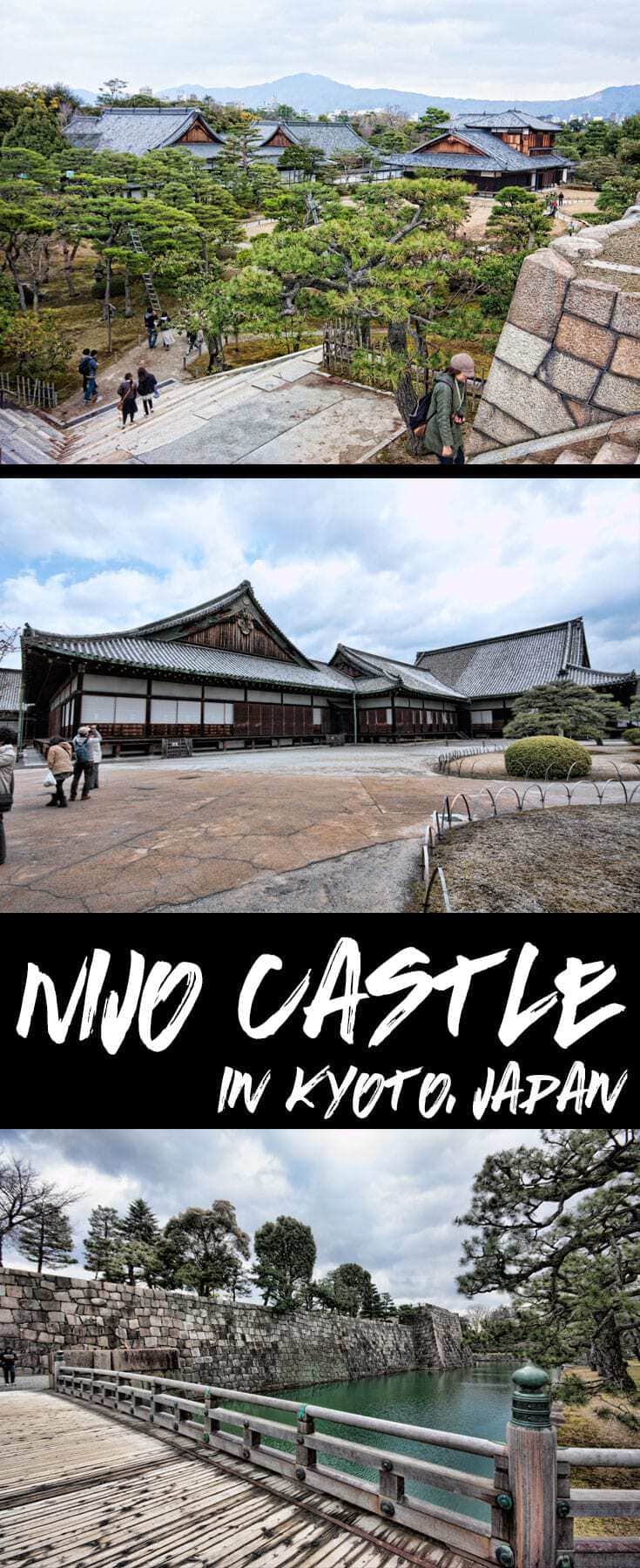
Have you been to Nijo Castle? What were your thoughts, would you recommend it to someone visiting Kyoto city?
A rainy day in Osaka
Monday 23rd of September 2024
[…] you’ve been fascinated with Japanese history and the Shogunate era you simply must put a visit to Nijo Castle high on your list. These grounds are impressive, imposing and rich in decorative […]
Danial
Wednesday 22nd of June 2016
I'm going to Kyoto next year and I haven't decided on the itinerary yet but I'll definitely keep Nijo Castle in mind!
2 Aussie Travellers
Thursday 23rd of June 2016
Have a fabulous trip Danial, it's a great ity to explore and spend some time immersing yourself in.
Danielle Des
Tuesday 21st of June 2016
Learned so much about the bush warbler floors. I would love to hear the chirping from the boards one day.
Mar Pages
Monday 20th of June 2016
I wouldn't pass this up just because there isn't a castle, to be honest the nightingale floors is a good enough reason- what a practical yet pleasant idea.
Francesca @onegrloneworld
Monday 20th of June 2016
I don't know anything about the time of the samurai or ninja, so reading about the nightingale floors was really interesting! I'd like to go visit so I can hear the sound for myself :D
2 Aussie Travellers
Thursday 23rd of June 2016
LOL I think if I was a kid again I'd be addicted to anime it's so widely available in the west now